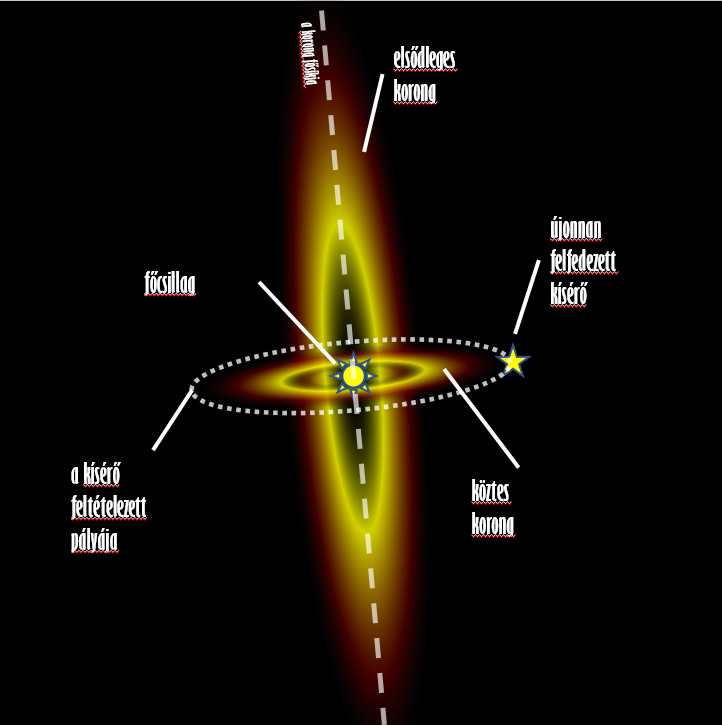Astronomers Reveal a New Binary Star System—Offering an Unprecedented View of Its Unique Structure
Astronomers have long observed that many stars come in pairs, forming binary or multiple systems in which the stars orbit one another. But what do these extraordinary systems actually look like, and how do they work? A research team led by a scientist from the HUN-REN Research Centre for Astronomy and Earth Sciences (HUN-REN CSFK), in collaboration with international partners, has come closer to answering these questions.
The discs surrounding young stars are generally composed of more or less symmetrical rings. In recent years, however, an increasing number of these discs have been found to contain asymmetric structures—such as crescent-shaped clumps and spiral arms.
What makes the disc around T CrA truly unique is that it consists of two separate rings that are not aligned in the same plane—unlike, for instance, the rings of Saturn—but are oriented nearly perpendicular to one another. Researchers have proposed that there may be another star in the T CrA system responsible for splitting the disc and forming the intermediate structure perpendicular to the main plane. However, this elusive companion has remained undetected until now.

The T CrA system as observed by VLTI/MATISSE. The image shows the infrared thermal emission of the dust surrounding the stars. The previously known source is T CrA A, while the newly discovered companion star has been named T CrA B.
After all four of the European Southern Observatory’s giant telescopes were directed at T CrA, researchers produced the highest-resolution, sharpest image of the system to date. The dusty disc surrounding the central star is clearly visible in the image; however, to the west—at a distance of 23 astronomical units—another source appears. According to the researchers, this is T CrA B, the long-sought companion of T CrA, along with the surrounding dust, with a temperature between 300 and 500 °C. The companion star is located in the same direction as the intermediate disk, suggesting that they lie in the same plane. This supports the earlier hypothesis that the gravitational influence of the companion, orbiting on a plane perpendicular to the main disk, disrupted the disk and created the intermediate disk in the same orbital plane.

A schematic illustration of the T CrA system based on the latest findings.
This discovery highlights the complexity of the environment surrounding young binary stars. Accurately determining the orbit of T CrA B would be crucial for testing the interaction between the stars and the disc through detailed hydrodynamic simulations. For this reason, the research team will continue observing T CrA in order to determine the companion’s orbital path.


